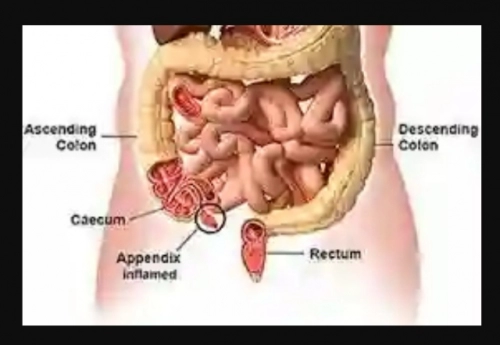News And PoliticsCommunications And EntertainmentSports And FitnessHealth And LifestyleOthersGeneralWorldnewsBusiness And MoneyNigerianewsRelationship And MarriageStories And PoemsArts And EducationScience And TechnologyCelebrityEntertainmentMotivationalsReligion And PrinciplesNewsFood And KitchenHealthPersonal Care And BeautyBusinessFamily And HolidaysStoriesIT And Computer ScienceSportsRelationshipsLawLifestyleComedyReligionLifetipsEducationMotivationAgriculturePoliticsAnnouncementUSMLE And MedicalsMoneyEngineeringPoemsSocial SciencesHistoryFoodGive AidBeautyMarriageQuestions And AnswersHobbies And HandiworksVehicles And MobilityTechnologyFamilyPrinciplesNatureQuotesFashionAdvertisementChildrenKitchenGive HelpArtsWomenSpiritualityQuestions AnsweredAnimalsHerbal MedicineSciencePersonal CareFitnessTravelSecurityOpinionMedicineHome RemedyMenReviewsHobbiesGiveawayHolidaysUsmleVehiclesHandiworksHalloweenQ&A
Medicals
Images/noimage.png
Guest Usmle Prep‎
An Average Student's USMLE Step 1 Experience
~1.6 mins read

There are lots of experiences for the beginners to motivate them and choose the right resources and how to use them. This one’s for those in their mid/end phase of preparation and aren’t getting the desired score in NBME/ predictive assessments.
Don’t take NBME seriously.
I use to tell this to myself before taking any assessment, and almost ended up being heart broken every time. Mostly because I read too many people saying how predictive 18/20 was for them, but let me tell you, I scored almost 35+ more than I scored in 20 (2 months ago) and 20+ more than NBME 18 5 days before exam, (how? Read 2nd point). For me most predictive was uwsa (within 5 points)
Your attitude before and on exam day matters a lot.
I lost all hopes after NBME18 (5 days before), seriously I got such low score in 18 that the only motivation left for me was ‘ just 5 more days, that’s it’, thereafter I entered this false (super)confident mode, And it worked like charm. Day before exam I studied till evening and then went to a Japanese Restaurent, took long walk, watched YouTube etc and slept like a baby. In morning I had 1/2 cup of coffee, oats and walked to the exam centre listening to my favourite playlist. Took break after every block, ate only protein bar (no lunch). In last 2 I couldn’t complete blocks b/c of fatigue, total 2 question unanswered. I celebrated regardlessly.
One thing that really helped was taking 120 at centre. It made me more confident and less anxious on exam day.
Sticking to resource is more important than trying getting the best of everything.
ZAnki/UFAP/BNB+lighyear/kaplan/najeeb/BRS/sketchy these are some really powerful tools, that doesn’t mean u have to do them all. Just choose one and stick to it. Have a routine, take breaks when needed, use pomadoro, you should be good.
Total duration of preparation 6 months
Nbme 13- 205 base line April
Uwsa 1 (at 50% uw) 243 may
Nbme 20- 200 June
nbme 18 215 5day before
Uwsa 2 243 20 days before
Free 120 80% 2 days before
Real deal
237
trust your knowledge, hardwork and judgment.
Jai mata di
Don’t take NBME seriously.
I use to tell this to myself before taking any assessment, and almost ended up being heart broken every time. Mostly because I read too many people saying how predictive 18/20 was for them, but let me tell you, I scored almost 35+ more than I scored in 20 (2 months ago) and 20+ more than NBME 18 5 days before exam, (how? Read 2nd point). For me most predictive was uwsa (within 5 points)
Your attitude before and on exam day matters a lot.
I lost all hopes after NBME18 (5 days before), seriously I got such low score in 18 that the only motivation left for me was ‘ just 5 more days, that’s it’, thereafter I entered this false (super)confident mode, And it worked like charm. Day before exam I studied till evening and then went to a Japanese Restaurent, took long walk, watched YouTube etc and slept like a baby. In morning I had 1/2 cup of coffee, oats and walked to the exam centre listening to my favourite playlist. Took break after every block, ate only protein bar (no lunch). In last 2 I couldn’t complete blocks b/c of fatigue, total 2 question unanswered. I celebrated regardlessly.
One thing that really helped was taking 120 at centre. It made me more confident and less anxious on exam day.
Sticking to resource is more important than trying getting the best of everything.
ZAnki/UFAP/BNB+lighyear/kaplan/najeeb/BRS/sketchy these are some really powerful tools, that doesn’t mean u have to do them all. Just choose one and stick to it. Have a routine, take breaks when needed, use pomadoro, you should be good.
Total duration of preparation 6 months
Nbme 13- 205 base line April
Uwsa 1 (at 50% uw) 243 may
Nbme 20- 200 June
nbme 18 215 5day before
Uwsa 2 243 20 days before
Free 120 80% 2 days before
Real deal
237
trust your knowledge, hardwork and judgment.
Jai mata di
profile/1212download1.jpeg
Abel

Skip The Sit-ups, They Don't Give The Great Abdomen We Dreamed Of. Find Out What Does
~0.9 mins read
Sit-ups once ruled as the way to get tighter abs and a slimmer waistline, while “planks” were merely flooring. Now planks — exercises in which you assume a position and hold it — are the gold standard for working your core, while classic sit-ups and crunches have fallen out of favor. Why the shift?
One reason is that sit-ups are hard on your back — they push your curved spine against the floor. Sit-ups also work your hip flexors, the muscles that run from the thighs to the lumbar vertebrae in the lower back. When hip flexors are too strong or too tight, they tug on the lower spine which can be a source of lower back discomfort.
Second, planks recruit a better balance of muscles on the front, sides, and back of the body during exercise than sit-ups, which target just a few muscles. Remember, your core goes far beyond your abdominal muscles.
Finally, activities of daily living, as well as sports and recreational activities, call on your muscles to work together, not in isolation. Sit-ups or crunches strengthen just a few muscle groups. Through dynamic patterns of movement, a good core workout helps strengthen the entire set of core muscles — the muscles you rely on for daily activities as well as for sports and recreational activities.
One reason is that sit-ups are hard on your back — they push your curved spine against the floor. Sit-ups also work your hip flexors, the muscles that run from the thighs to the lumbar vertebrae in the lower back. When hip flexors are too strong or too tight, they tug on the lower spine which can be a source of lower back discomfort.
Second, planks recruit a better balance of muscles on the front, sides, and back of the body during exercise than sit-ups, which target just a few muscles. Remember, your core goes far beyond your abdominal muscles.
Finally, activities of daily living, as well as sports and recreational activities, call on your muscles to work together, not in isolation. Sit-ups or crunches strengthen just a few muscle groups. Through dynamic patterns of movement, a good core workout helps strengthen the entire set of core muscles — the muscles you rely on for daily activities as well as for sports and recreational activities.
profile/1407tmp-cam-1936261485.jpg
Akbon

Avoid Excessive Intake Of These 6 Foods If You Have Appendix
~8.7 mins read
Appendicitis is another name for appendix disorder. When the appendix gets inflamed, something happens. The appendix is a three-and-a-half-inch-long tube of tissue that stretches from the large intestine on the body's lower right side.
According to studies, appendicitis is the most common cause of abdominal pain that requires surgery in the United States. If you don't get treatment for appendicitis right away, it can cause your appendix to burst, allowing bacteria to enter your abdominal cavity and cause death.
When the appendix is often blocked by feces or something else that shouldn't be there, appendix disease develops. Appendix disease may also be caused by cancer. Infection may also cause the appendix to become blocked.
If you have appendicitis, your body will start to show you any symptoms. Please seek medical attention if you begin to encounter them right away.
Upper abdominal pain or discomfort around the belly button.
You are experiencing pain on the lower right side of your abdomen.
Appetite loss is common.
Indigestion.
Nausea and vomiting are common side effects.
Diarrhea.
Constipation.
Abdominal swelling.
Low-grade fever.
Fever.
The precise cause of appendicitis is unknown to many health professionals. It is thought to occur when a portion of your appendix becomes obstructed or blocked. The following are some of the items that can cause your appendix to become blocked:
Stool that has hardened.
Lymphocytic follicles have grown in size.
Worms in the intestines.
An illness caused by a traumatic event.
Tumors are a form of cancer.
Keep in mind that if your appendix becomes blocked, the bacteria within it will begin to multiply, resulting in pus and swelling.
Appendicitis is most common in people between the ages of 10 and 30, and the majority of them have ruptured appendicitis. Other than appendicitis surgery, there is no other way to treat it. Certain foods can irritate the intestines and cause inflammation. Consumption of these foods will result in digestive problems, which will increase the risk of appendicitis. There are some of the foods you should eat:
1. Red meat
Since red meat contains a large amount of fat and iron, it takes longer to digest in the intestine, increasing the risk of developing appendicitis. When you eat red meat, you will experience constipation, which will lead to appendix inflammation.
2. Alcohol
Appendicitis is more likely if you drink alcohol. Consumption of alcoholic beverages can delay digestion, dehydrate the body, and irritate the intestines. All of these symptoms can lead to appendicitis, particularly if you drink too much alcohol.
3. Dairy products
Constipation and gas can be caused by dairy products such as cheese, milk, ice cream, yogurt, and other dairy products. When you eat too many dairy products, your metabolism is disrupted, and you're more likely to get appendicitis. Reduce your dairy consumption and replace it with fiber-rich foods like fruits and vegetables, as well as plenty of water.
4. Chili and paprika seeds
These two do not cause appendicitis, but they do increase the chances of getting it because they cause digestive problems like nausea and stomach pain. When you eat chili seeds and peppers that haven't been destroyed, they build up in your intestine, causing appendix inflammation over time.
5. Foods that are hard to break when chewed
One of the most common causes of appendicitis is chewing foods that are difficult to break apart, such as popcorn. Tiny pieces of food that do not break down completely when chewed can clog the appendix.
6. Fast food with high fat
Fast food can cause appendicitis due to its high-fat content. Fast foods are difficult to digest due to their low fiber content. There is a risk of soil hardening and obstructing the intestines. It slows down the digestive process if you drink it regularly.
Some foods can aid in the prevention of appendicitis. High-fiber foods, such as the following, are very helpful in preventing appendicitis:
Fruits.
Vegetables.
Lentils, split peas, beans and other legumes.
Oatmeal, brown rice, whole wheat, and other whole grains.
Health is wealth. Please adhere to the tips of this article if you want to live long.
Advertisement
Loading...
 Guest Usmle Prep‎
Guest Usmle Prep‎
 Abel
Abel
 Akbon
Akbon